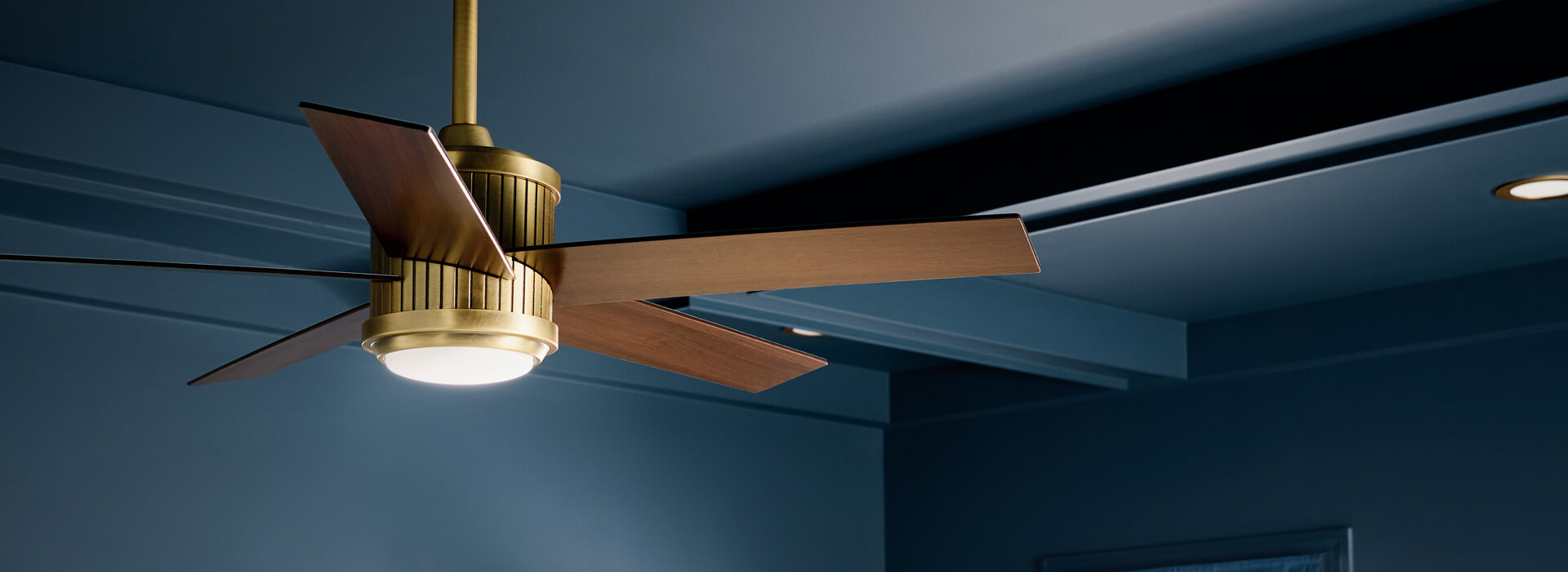

Articles
How To Choose Ceiling Fan
Modified: February 22, 2024
Learn how to choose the perfect ceiling fan for your home with these informative articles. Improve airflow and enhance comfort with expert tips and advice.
(Many of the links in this article redirect to a specific reviewed product. Your purchase of these products through affiliate links helps to generate commission for Storables.com, at no extra cost. Learn more)
Introduction
Choosing the right ceiling fan for your home is more than just a matter of aesthetics. While the design and style of a ceiling fan are important considerations, there are several other factors that you should keep in mind to ensure optimal functionality and efficiency. From room size and ceiling height to blade material and motor quality, each aspect plays a crucial role in determining the performance of your ceiling fan. In this article, we will guide you through the important factors to consider when selecting a ceiling fan to help you make an informed decision.
Before diving into the details, it’s worth noting that a well-chosen ceiling fan can provide a range of benefits beyond just cooling. A ceiling fan can help improve air circulation, enhance energy efficiency, and even add a decorative touch to your space. By understanding the key factors to consider, you can choose a ceiling fan that not only meets your functional needs but also complements your home’s interior design.
So, let’s explore the factors you need to consider when choosing a ceiling fan:
Key Takeaways:
- Choose a ceiling fan with an appropriate blade span based on your room size to ensure effective air circulation and cooling, preventing strain on the motor and contributing to overall durability.
- Consider the height of your ceiling and choose the right fan mount to ensure optimal airflow and cooling, taking into account factors such as safety, clearance space, and installation requirements.
Read more: How To Choose An Outdoor Ceiling Fan
Factors to Consider
When selecting a ceiling fan, there are several important factors that you should take into account. These factors will ensure that the fan you choose is suitable for your specific needs and will provide optimal performance. Let’s take a closer look at each of these factors:
Room Size
The size of the room where the ceiling fan will be installed is a critical factor to consider. Larger rooms require fans with larger blades to effectively move the air and provide adequate cooling. On the other hand, smaller rooms can benefit from fans with smaller blades. It’s recommended to follow a guideline that suggests a fan size based on the square footage of the room for optimal air circulation and comfort.
Ceiling Height
The height of the ceiling also plays a vital role in selecting the right ceiling fan. Standard ceilings usually range from 8 to 9 feet, but if you have a higher ceiling, you will need a downrod to extend the fan closer to the floor for better air circulation. Conversely, if you have a low ceiling, you should opt for a low-profile or hugger ceiling fan that is designed to be mounted flush against the ceiling.
Blade Material
The material of the ceiling fan blades affects both the performance and the aesthetics of the fan. Common blade materials include wood, metal, and plastic. Wood blades provide a classic and elegant look but might require more maintenance. Metal blades, such as those made from aluminum, offer durability and efficiency. Plastic blades are usually more affordable and require less maintenance but may not be as durable.
Read more: How To Choose A Ceiling Light
Number of Blades
While there is no hard and fast rule about the number of blades a ceiling fan should have, the number of blades can influence the airflow and noise level of the fan. Fans with fewer blades tend to generate less drag, resulting in better air circulation and noise reduction. However, fans with more blades can offer a unique visual appeal and may create a gentle breeze. Consider your personal preferences and the desired airflow when deciding on the number of blades.
Motor Quality
The quality of the ceiling fan’s motor is crucial in ensuring its performance and longevity. A high-quality motor will operate quietly, provide consistent airflow, and have a longer lifespan. Look for fans with motors that are energy-efficient and have advanced features like ball bearings or sealed bearings for durability and smooth operation.
Control Options
Consider the available control options for your ceiling fan. Modern ceiling fans offer a variety of control methods, including wall-mounted switches, pull chains, remote controls, or even smart home integration. Choose the control option that is most convenient for you and fits your lifestyle.
Room Size
When choosing a ceiling fan, one of the most important factors to consider is the size of the room where the fan will be installed. The size of the room will determine the appropriate blade span for the fan, which in turn affects the airflow and cooling efficiency.
In general, larger rooms require fans with larger blade spans to effectively circulate the air and provide sufficient cooling. On the other hand, smaller rooms can benefit from fans with smaller blade spans. Choosing the right size fan for your room is crucial to ensure optimal performance and comfort.
To determine the ideal blade span for your room size, you can use a simple guideline that suggests a range based on the square footage of the room. As a general rule of thumb:
- For rooms up to 75 square feet, a fan with a blade span of 29 to 36 inches is recommended.
- For rooms ranging from 76 to 144 square feet, a fan with a blade span of 36 to 42 inches is suitable.
- For rooms ranging from 145 to 225 square feet, a fan with a blade span of 44 to 52 inches is recommended.
- For larger rooms over 225 square feet, a fan with a blade span of 54 inches or more is ideal.
It’s important to note that these guidelines are approximate and can vary depending on other factors such as ceiling height and airflow conditions. If you have high ceilings or require more airflow, you may consider a larger blade span or multiple fans to achieve the desired cooling effect.
Additionally, it’s worth mentioning that larger rooms may benefit from fans with multiple blades as they can help to move more air effectively. However, the number of blades is not the only determining factor for airflow. Blade pitch, motor power, and other factors also play a role in the overall performance of the ceiling fan.
By considering the size of your room and selecting a fan with an appropriate blade span, you can ensure that the airflow is sufficient to keep the space cool and comfortable. This will also help to prevent any strain on the motor and contribute to the overall durability and longevity of the ceiling fan.
Read more: How To Choose A Bathroom Exhaust Fan
Ceiling Height
When selecting a ceiling fan, it’s crucial to consider the height of your ceiling. The ceiling height in your room will determine the type of fan mount you need, whether it’s a standard mount, a low-profile mount, or an extended downrod mount.
For rooms with standard 8 to 9-foot ceilings, a standard mount will work well. With this type of mount, the fan is attached directly to the ceiling, allowing for maximum headroom. The distance from the blades to the floor should be at least 7 feet for safety reasons and to ensure proper airflow.
However, if you have a room with a low ceiling height, typically less than 8 feet, you will need a low-profile or hugger ceiling fan. These fans are specifically designed to be mounted flush against the ceiling, minimizing the distance between the blades and the floor. This type of mount is ideal for rooms with limited vertical space like basements or attics.
Alternatively, if you have a high ceiling, usually over 9 feet, you may want to consider an extended downrod mount. This type of mount uses a downrod to extend the fan closer to the floor, which helps to improve airflow and circulation in rooms with tall ceilings. The length of the downrod will depend on the height of your ceiling, and it’s important to ensure that the fan is installed at a safe distance from the floor.
It’s important to note that if you have a sloped or vaulted ceiling, you may need a special ceiling adapter or an angled mount to ensure proper installation and functionality of the fan. These adapters allow the fan to be mounted securely on sloped surfaces while maintaining level operation.
In addition to the type of mount, you should also consider the clearance space between the blades and any obstacles in the room, such as furniture or light fixtures. It’s recommended to have a clearance of at least 18 inches between the blades and any surrounding objects to ensure safe and efficient operation of the fan.
By considering the height of your ceiling and choosing the appropriate fan mount, you can ensure that the fan is installed at the optimal distance from the floor and provide effective airflow and cooling for your room.
Blade Material
When selecting a ceiling fan, one important factor to consider is the material of the fan blades. The material of the blades not only affects the aesthetics of the fan but also plays a role in the fan’s performance, durability, and maintenance requirements.
There are several common blade materials used in ceiling fans, each with its own set of characteristics. Let’s take a closer look at some of the popular blade materials:
Wood
Wood blades are a classic choice and can provide a timeless and elegant look to your ceiling fan. They come in a variety of finishes and styles, allowing you to match them to your home’s decor. Wood blades are typically made from high-quality hardwoods such as oak, walnut, or cherry. These blades are sturdy and can provide excellent airflow. However, it’s important to note that wood blades may require more maintenance compared to other materials. They may need regular dusting and occasional polishing or oiling to keep them in optimal condition.
Metal
Metal blades are another popular option for ceiling fans. They are typically made of aluminum or stainless steel and offer durability and longevity. Metal blades are often lighter than wood blades, resulting in improved energy efficiency and easier installation. They are also resistant to warping or bending, making them suitable for outdoor or humid environments. Additionally, metal blades are relatively easy to clean and maintain, requiring only occasional dusting or wiping to keep them looking their best.
Read more: How To Choose Bathroom Exhaust Fan
Plastic
Plastic blades are a more affordable option for ceiling fans. They are made from high-quality polymers or composite materials. Plastic blades are lightweight and can offer excellent performance. They are also resistant to moisture and are often used in outdoor ceiling fans. Plastic blades are relatively low-maintenance, requiring minimal cleaning and generally resistant to dust or stains. However, they may not have the same visual appeal as wood or metal blades, and some may find them less durable in the long run.
When choosing the blade material for your ceiling fan, it’s important to consider factors such as maintenance requirements, desired aesthetics, and the specific needs of your space. Each material has its own advantages and considerations, so make sure to weigh them carefully before making your decision.
Remember, the blade material is just one aspect to consider when choosing a ceiling fan. Other factors such as blade size, shape, and pitch, as well as motor quality, control options, and energy efficiency, also play crucial roles in the overall performance and functionality of the fan.
Number of Blades
The number of blades on a ceiling fan is another factor to consider when choosing the right fan for your space. While the number of blades does not directly impact the fan’s performance or airflow, it can affect the noise level, visual appeal, and overall aesthetics of the fan.
Ceiling fans typically come with three, four, or five blades. However, it’s important to note that the number of blades alone does not determine the effectiveness or efficiency of the fan. Other factors such as blade pitch, motor power, and airflow design also play a significant role in the overall performance of the fan.
Fans with fewer blades tend to generate less drag, resulting in less noise and potentially better airflow. They can create a smoother and quieter operation, making them a popular choice for bedrooms or areas where noise reduction is desired. With fewer blades, airflow may be more focused and concentrated, offering a more direct cooling effect.
On the other hand, fans with more blades can create a unique visual appeal and may offer a different airflow pattern. They can provide a distinctive look to your space and can be a focal point in the room’s design. However, it’s worth noting that fans with more blades may generate slightly more noise due to increased air resistance. The difference may not be significant, but it should be considered if noise level is a concern.
Ultimately, the choice of the number of blades comes down to personal preference and the desired aesthetic for your space. Some users may prefer the sleek and minimal look of a fan with three blades, while others may like the more traditional or ornate appearance of a fan with five blades. Consider the style and overall design of your room when making this decision.
In addition to the number of blades, other factors such as blade material, size, and pitch should be taken into account when choosing a ceiling fan. It’s important to strike a balance between aesthetics and functionality to ensure optimal performance and satisfaction with your choice.
Remember, the number of blades is just one aspect to consider when selecting a ceiling fan. Take into account other factors such as room size, motor quality, control options, energy efficiency, and noise level to choose a fan that best suits your needs and preferences.
Motor Quality
The quality of the motor in a ceiling fan is a crucial factor to consider when choosing the right fan for your space. The motor is the heart of the fan and is responsible for its performance, efficiency, and longevity.
A high-quality motor ensures smooth and reliable operation of the fan, providing consistent airflow without excessive noise or vibration. Here are some key aspects to consider when evaluating the motor quality:
Motor Power
The power of the motor directly affects the performance of the fan. A motor with higher power can generate more torque, allowing the fan to move air more effectively. This is particularly important for larger rooms or spaces with higher ceilings where a stronger airflow may be required. Look for motors with sufficient power ratings to meet your specific needs.
Read more: How To Buy Ceiling Fan
Bearing Type
The type of bearings used in the motor can impact its durability and smooth operation. There are typically two types of bearings used in ceiling fan motors: sleeve bearings and ball bearings. Sleeve bearings are more common in lower-end models and tend to have a shorter lifespan. Ball bearings, on the other hand, offer better durability and provide smoother operation. Fans with ball bearings are typically more reliable and require less maintenance over time.
Noise Level
The noise level of the fan is an important consideration, especially if you plan to install it in a bedroom or a quiet living area. A high-quality motor minimizes noise and vibrations, ensuring a peaceful and comfortable environment. Look for fans that are specifically designed to operate quietly, often labeled as “whisper-quiet” or “silent operation.” Reading customer reviews and checking the decibel rating can also provide insights into the noise level of the fan.
Energy Efficiency
Another aspect of motor quality is its energy efficiency. A more efficient motor consumes less energy while providing the same or even better airflow performance. Look for fans that are labeled with an Energy Star rating or those that meet energy efficiency standards. Energy-efficient motors not only save you money on your electricity bills but also contribute to a more environmentally friendly home.
When selecting a ceiling fan, it’s essential to choose one with a high-quality motor that matches your specific needs and preferences. A reliable motor ensures long-lasting performance, efficient airflow, and quiet operation, enhancing the overall functionality and enjoyment of your fan.
Don’t forget to consider other factors such as blade material, control options, style, and size to make a well-rounded decision when choosing a ceiling fan for your space.
Control Options
When it comes to ceiling fans, having convenient and user-friendly control options can greatly enhance your overall experience and ease of use. While traditional pull chains are still commonly used, modern ceiling fans offer a variety of control options to suit different preferences and lifestyles.
Read more: How To Update A Ceiling Fan
Wall-Mounted Switches
One of the most common control options is a wall-mounted switch. This allows you to easily control the fan’s speed and lighting from a fixed location on the wall. Wall switches often come with multiple control settings, allowing you to adjust the fan speed to your desired level of comfort. This option is especially useful for rooms where you want a dedicated control point or if you prefer a more traditional control method.
Pull Chains
Pull chains are the traditional and simplest control method for ceiling fans. Each chain controls different functions such as fan speed and lighting. Pull chains are easy to use and are typically included with most ceiling fans. However, they may require a bit more effort to reach and operate, especially if the fan is installed in a high-ceilinged room.
Remote Controls
Remote controls offer convenience and flexibility, allowing you to control the fan from anywhere in the room. With a remote control, you can easily adjust the fan speed, control the lighting, and even set timers or program specific settings. This option is popular for its ease of use and eliminates the need for additional wiring or switches on the wall. Remote controls are especially beneficial for rooms with tall ceilings or large spaces where accessing a wall-mounted switch may be inconvenient.
Smart Home Integration
Smart home integration is another increasingly popular control option for ceiling fans. With smart home technology, you can control your ceiling fan using voice commands through virtual assistants like Amazon Alexa or Google Assistant. In addition, you can control the fan remotely through your smartphone or tablet using dedicated apps. Smart home integration allows you to adjust the fan speed, change the direction of airflow, and even set schedules or automate the fan’s operation based on your preferences.
When choosing the control options for your ceiling fan, consider your personal preferences, the level of convenience you desire, and the compatibility with your existing home automation system (if applicable). The right control option can enhance the functionality of your fan and make it easier to adjust settings to your liking.
Remember, some fans may offer a combination of control options, giving you the flexibility to choose the method that best suits your needs.
Read more: How To Use A Ceiling Fan
Energy Efficiency
Energy efficiency is a crucial consideration when selecting a ceiling fan. An energy-efficient fan not only helps reduce your environmental impact but also saves you money on your energy bills. When shopping for a ceiling fan, here are some factors to consider in relation to energy efficiency:
Motors with Energy Star Certification
Look for ceiling fans that have received the Energy Star certification. This certification ensures that the fan meets strict energy efficiency guidelines set by the Environmental Protection Agency (EPA). Energy Star fans are designed to consume less energy compared to conventional fans, helping you save on electricity costs without compromising performance.
Opt for ceiling fans equipped with energy-efficient motors that are specifically designed to minimize energy consumption while providing powerful airflow. These motors are often more advanced and use less electricity to operate, translating into long-term energy savings. Look for specifications such as “DC” (direct current) motors or “ECM” (electronically commutated motor) technology, as these are known for their energy efficiency.
Ceiling fans with built-in LED lighting are not only convenient but also energy-efficient. LEDs consume less energy and have a longer lifespan compared to traditional incandescent or fluorescent bulbs. Look for fans that feature integrated LED light kits or those that are compatible with energy-efficient LED bulbs to further reduce energy consumption.
Fans with multiple speed settings allow you to adjust the airflow and energy consumption based on your comfort needs. Running your fan on a lower speed, especially when a gentle breeze is sufficient, can help conserve energy. Look for fans that offer at least three or more speed settings, allowing you to customize the airflow to your liking.
Ceiling fans with a reversible motor can help improve energy efficiency year-round. During warmer months, set the fan to rotate counterclockwise to create a cooling effect. In colder months, reverse the direction to clockwise to circulate warm air that tends to rise and collect near the ceiling, helping to distribute the heat more evenly throughout the room. By using your fan effectively, you can rely less on heating and cooling systems, resulting in energy savings.
When selecting a ceiling fan, look out for the Energy Star label, check for energy-efficient motors and LED lighting options, and consider the presence of variable speed settings and reversible airflow direction. These features can have a significant impact on the energy efficiency of your fan and contribute to both environmental sustainability and cost savings.
Read more: How A Ceiling Fan Works
Noise Level
Noise level is an important factor to consider when choosing a ceiling fan, especially if you plan to install it in areas such as bedrooms, living rooms, or quiet spaces. A noisy fan can be disruptive and impact your comfort and relaxation. Here are some factors to consider in relation to noise level:
Motor Quality
The quality of the motor plays a significant role in determining the noise level of a ceiling fan. High-quality motors are designed to operate quietly, reducing the amount of noise generated during operation. Look for fans that are advertised as “whisper-quiet” or have features like noise-reducing technology to ensure a peaceful and comfortable environment.
Blade Design and Material
The design and material of the fan blades can also impact noise levels. Blades with irregular shapes or rough edges can create more noise as they move through the air. Opt for fans with well-balanced blades made from materials that minimize vibrations and reduce noise. Metal or composite materials are often preferred for their noise-dampening properties.
Installation and Mounting
Proper installation and mounting of the fan can also contribute to noise reduction. Make sure the fan is securely installed, and all connections are tight to minimize any rattling or vibrations. Use a solid and stable mounting system to prevent unnecessary movement or wobbling that can produce noise during operation.
Control Options
Some control options can also affect noise levels. Remote control systems with digital or touch-sensitive buttons tend to produce less noise compared to traditional pull chains that may create rattling sounds when operated. Additionally, fans with variable speed settings allow you to adjust the fan speed to a level that is comfortable and quiet for your specific needs.
Customer Reviews and Ratings
When researching ceiling fans, read customer reviews and ratings to get an idea of the noise level experienced by others. Customers often provide feedback on the noise performance of the fan, giving you valuable insights into its actual operation. Pay attention to fans with consistently positive comments about quiet operation.
It’s important to note that while efforts are made to create quieter fans, some noise may still be present, particularly at higher speeds. Ambient noise in your environment, such as air conditioning or outside traffic, can also affect your perception of the fan’s noise level. Consider your specific requirements and preferences when deciding on an acceptable noise level for your ceiling fan.
By considering factors such as motor quality, blade design, installation, control options, and customer feedback, you can choose a ceiling fan with a noise level that meets your desired comfort and creates a peaceful atmosphere in your space.
Style and Aesthetic
When selecting a ceiling fan, it’s important to consider the style and aesthetic of the fan to ensure it complements your overall interior design. A well-chosen fan can enhance the visual appeal of a room and serve as a standout feature or seamlessly blend into the existing decor. Here are some factors to consider when it comes to style and aesthetic:
Design and Finish
Ceiling fans come in a variety of designs and finishes to suit different preferences and decor styles. Whether your home has a traditional, contemporary, rustic, or industrial vibe, you can find a fan that matches your aesthetic. Look for fans with design elements that resonate with your style, such as decorative accents, unique blade shapes, or architectural details.
The finish of the fan is another consideration. Common finishes include brushed nickel, bronze, black, white, and wood. Choose a finish that complements the other fixtures and finishes in the room, such as light fixtures, cabinet hardware, or door handles. A cohesive finish will create a harmonious and well-designed space.
Read more: How Are Ceiling Fans Mounted
Blade Shape and Material
The shape and material of the fan blades can also contribute to the overall style and aesthetic of the fan. Blades come in various shapes, including traditional, tropical, contemporary, or sleek designs. Consider the overall theme or vibe you want to create in the room and select blades that align with that aesthetic.
The material of the blades can also impact the visual appeal. Wood blades can evoke a warm and classic feel, while metal blades can provide a contemporary or industrial touch. Plastic blades may offer a more budget-friendly option and are available in various colors and finishes.
Lighting Fixtures
Some ceiling fans come with built-in lighting fixtures, which can add both style and functionality to the fan. Consider the type of lighting you prefer, whether it’s integrated LED lights, customizable dimming options, or the ability to use your own lightbulbs. The lighting fixture should complement the overall design and provide adequate illumination for the space.
Fan Size and Configuration
The size and configuration of the fan can also impact the overall aesthetic. Fans with larger blade spans can create a bold and dramatic statement, particularly in rooms with high ceilings or expansive spaces. Multiple fans in a room can create a visually striking and balanced look. Additionally, consider fans with unique configurations such as dual motor fans or those with retractable blades for a more innovative and eye-catching design.
Ultimately, choose a ceiling fan that aligns with your personal style and complements the overall aesthetic of your space. Don’t be afraid to select a fan that stands out as a statement piece or one that blends seamlessly into the background. The right style and aesthetic can elevate the visual appeal of your room and create a cohesive and harmonious design.
Installation and Maintenance
Proper installation and regular maintenance are crucial for ensuring the optimal performance and longevity of your ceiling fan. While professional installation is recommended, many homeowners choose to install their ceiling fans themselves. Here are some important considerations for installation and maintenance:
Read more: How To Repair Ceiling Fan
Installation
Before starting the installation process, carefully read and follow the manufacturer’s instructions included with your ceiling fan. Here are a few key points to keep in mind:
- Ensure the electrical circuit is turned off before beginning any electrical work.
- Check that the ceiling can support the weight of the fan. If necessary, install a ceiling fan-rated electrical box.
- Securely mount the fan to the ceiling, following the instructions for your specific mounting option.
- Make sure all electrical connections are properly made, following the wiring instructions provided.
- Balance the fan blades if necessary to minimize wobbling and noise during operation.
- Double-check that all screws and connections are tightened and secure.
If you are unsure or uncomfortable with any aspect of the installation process, it’s recommended to seek the assistance of a licensed electrician or professional installer.
Maintenance
Regular maintenance helps keep your ceiling fan in optimal condition and ensures efficient and smooth operation. Here are some maintenance tips to keep in mind:
- Keep the fan clean by regularly dusting the blades, motor housing, and other visible parts. Use a soft, lint-free cloth or a duster to gently remove dust and debris.
- For tough grime or dirt buildup, dampen a cloth with a mild cleanser or a mixture of water and mild soap. Avoid using abrasive cleaners that may damage the fan’s finish.
- Periodically check and tighten any loose screws or connections to minimize noise and ensure stability.
- Inspect the blades for any signs of damage or wear. If you notice any cracks or warping, consider replacing the blades to maintain proper balance and airflow.
- Check the motor and other electrical components for any signs of wear or damage. If you notice any unusual sounds or a decrease in performance, it’s recommended to have a professional inspect and service the fan.
- Keep an eye on the functionality of any additional features such as lighting fixtures, remote controls, or wall switches. Replace batteries or address any malfunctions as needed.
Regular maintenance not only helps keep your ceiling fan running smoothly but also ensures your safety. Always remember to turn off the power to the fan before performing any maintenance tasks to prevent electric shock or injury.
By following proper installation procedures and performing regular maintenance, you can enjoy the optimal performance, efficiency, and longevity of your ceiling fan for years to come.
Conclusion
Choosing the right ceiling fan for your home involves considering various factors, from room size and ceiling height to blade material and motor quality. By carefully assessing these factors, you can select a fan that not only complements your space aesthetically but also provides optimal functionality and efficiency.
When it comes to room size, ensure you choose a fan with an appropriate blade span to effectively circulate the air and provide sufficient cooling. Consider the height of your ceiling to determine the type of mount that will work best, whether it’s a standard mount, low-profile mount, or extended downrod mount.
The material of the fan blades impacts both performance and aesthetics. Wood blades offer a classic and elegant look, while metal blades provide durability and efficiency. Plastic blades offer affordability and low maintenance. Select the material that aligns with your style preferences and maintenance requirements.
The number of blades on a fan is a matter of personal preference. Fans with fewer blades tend to generate less noise and may offer more focused airflow, while fans with more blades can provide a distinctive visual appeal.
It’s essential to choose a fan with a high-quality motor that offers smooth operation, energy-efficient performance, and quiet functionality. Look for motors with reliable power, advanced bearings, and energy-efficient features for optimal performance and durability.
The control options available for ceiling fans have also evolved, ranging from traditional wall-mounted switches and pull chains to convenient remote controls and smart home integration. Select the control option that fits your lifestyle and provides ease of use.
Energy efficiency is an important consideration to minimize your environmental impact and reduce energy costs. Look for fans with Energy Star certification, energy-efficient motors, LED lighting, and variable speed settings to help conserve energy without compromising performance.
Consider the noise level of the fan, especially if you plan to install it in bedrooms or quiet areas. Opt for high-quality motors, well-designed blades, and smart installation practices to minimize noise and vibrations.
Lastly, consider the style and aesthetic of the fan to ensure it complements your overall decor. Choose a design, finish, and blade shape that aligns with your personal style and enhances the visual appeal of your space.
Proper installation and regular maintenance are crucial for optimal performance and longevity. Follow manufacturer instructions for installation and perform routine maintenance tasks such as dusting, tightening screws, and inspecting blades and motor components.
By considering these factors and factors, you can select a ceiling fan that not only meets your functional needs but also enhances the beauty and comfort of your home. A well-chosen ceiling fan will provide efficient airflow, cooling, and aesthetic appeal, making it an excellent addition to any room.
Frequently Asked Questions about How To Choose Ceiling Fan
Was this page helpful?
At Storables.com, we guarantee accurate and reliable information. Our content, validated by Expert Board Contributors, is crafted following stringent Editorial Policies. We're committed to providing you with well-researched, expert-backed insights for all your informational needs.
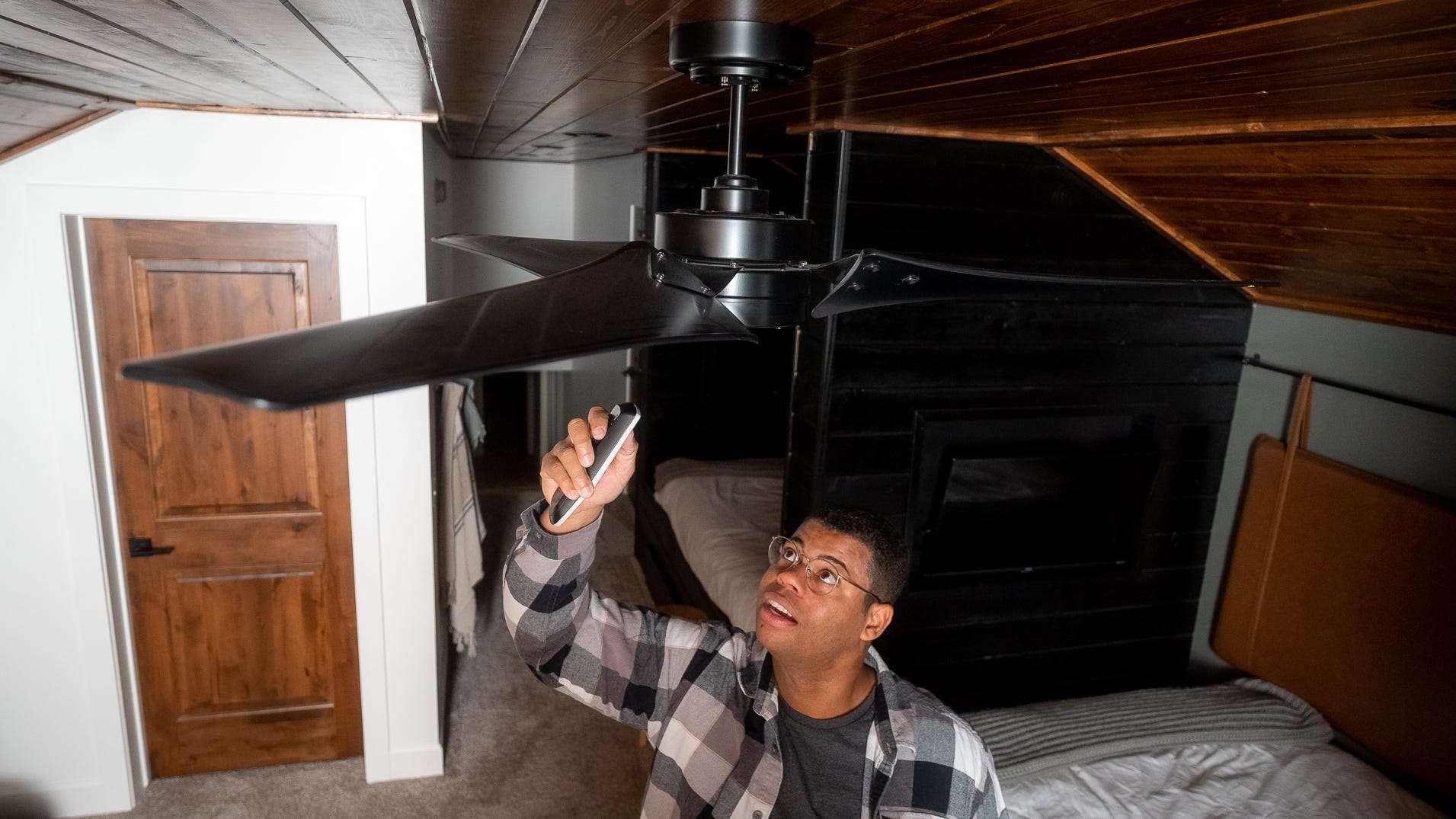
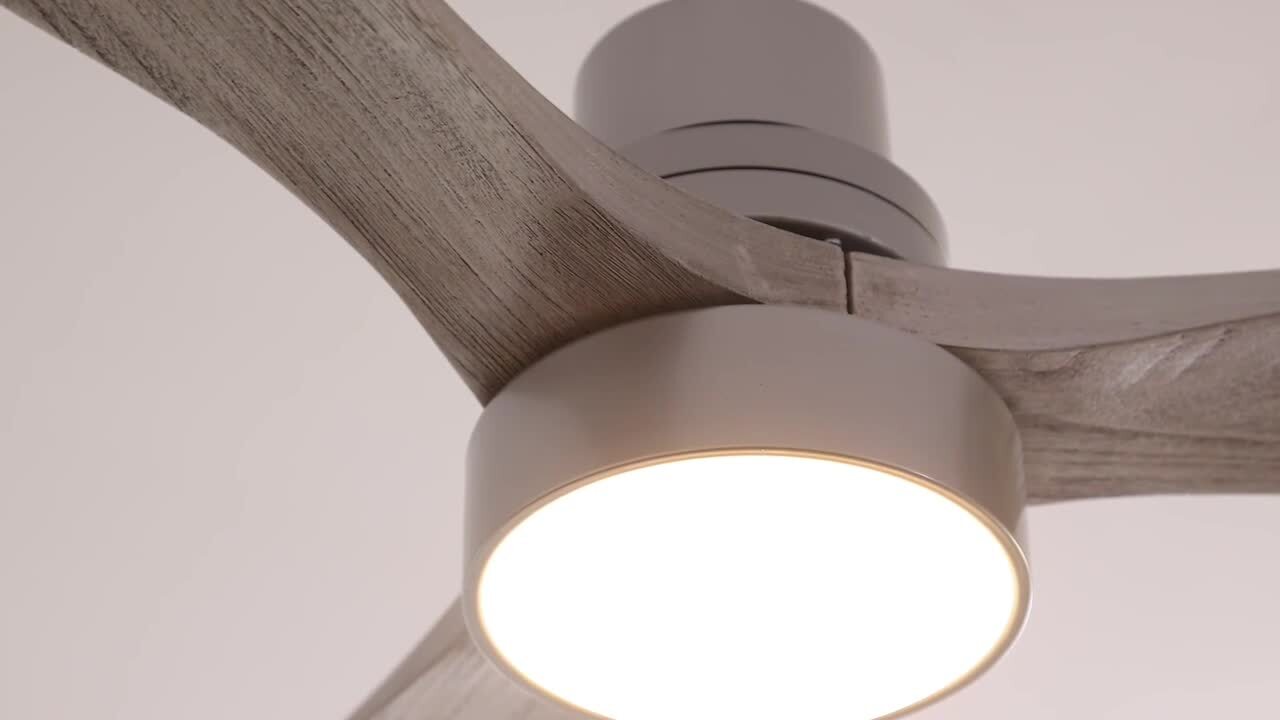
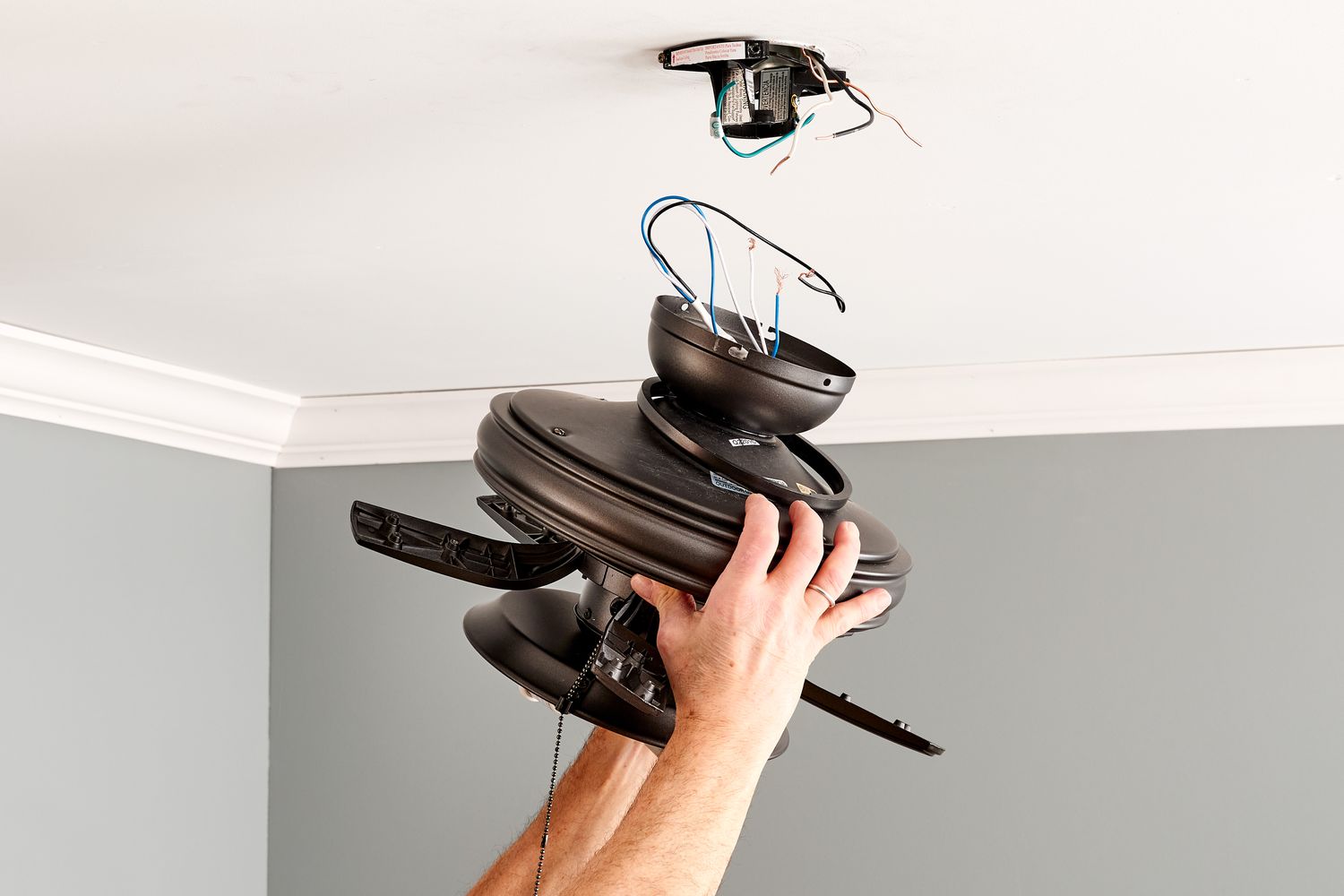
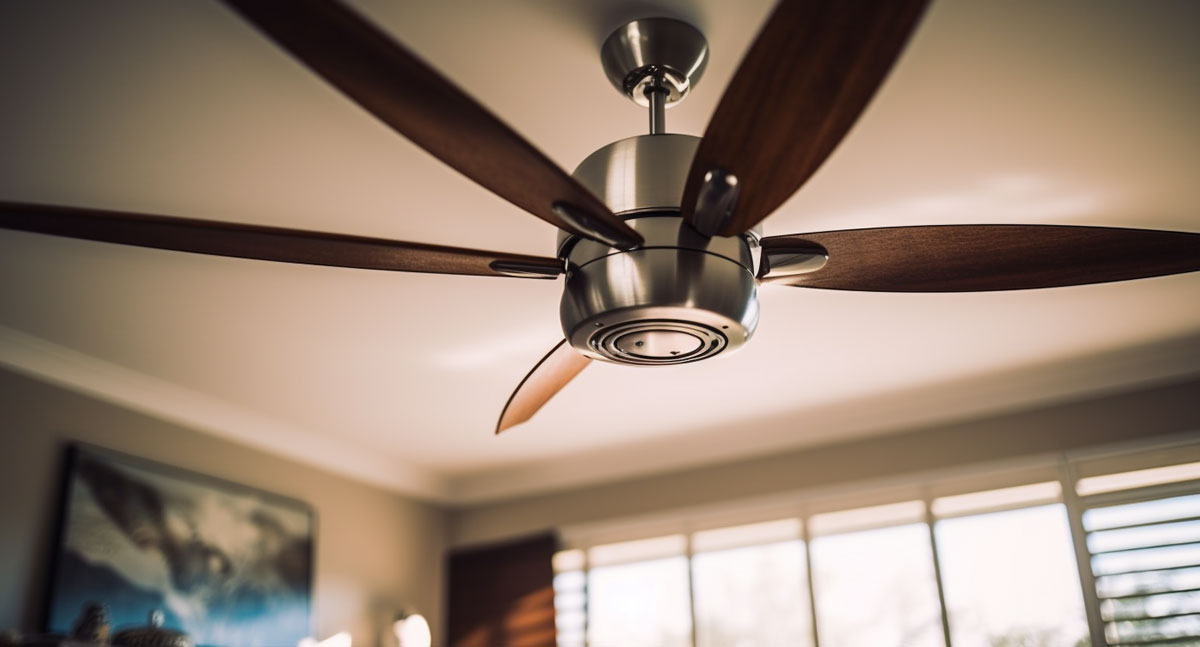


0 thoughts on “How To Choose Ceiling Fan”